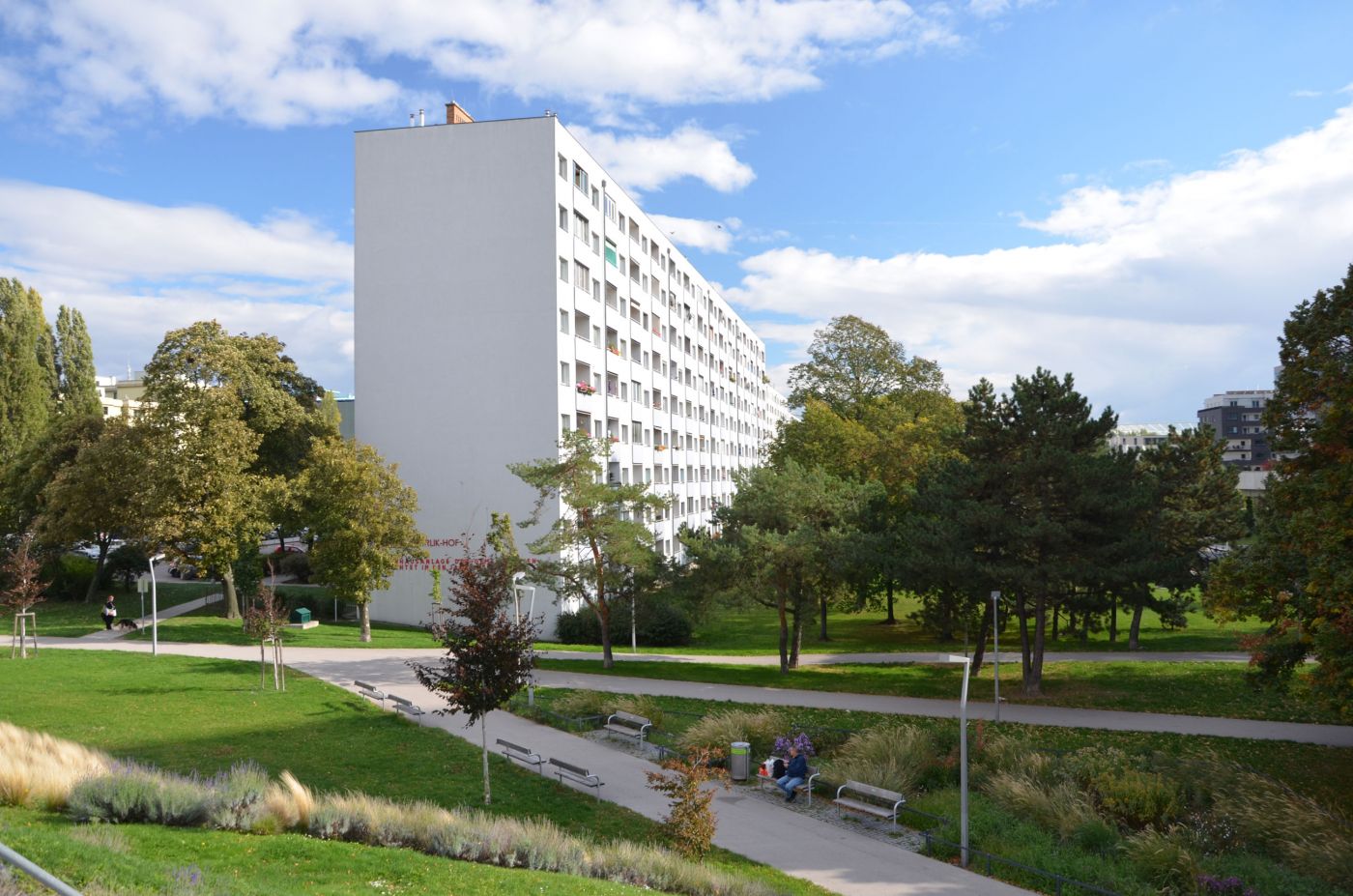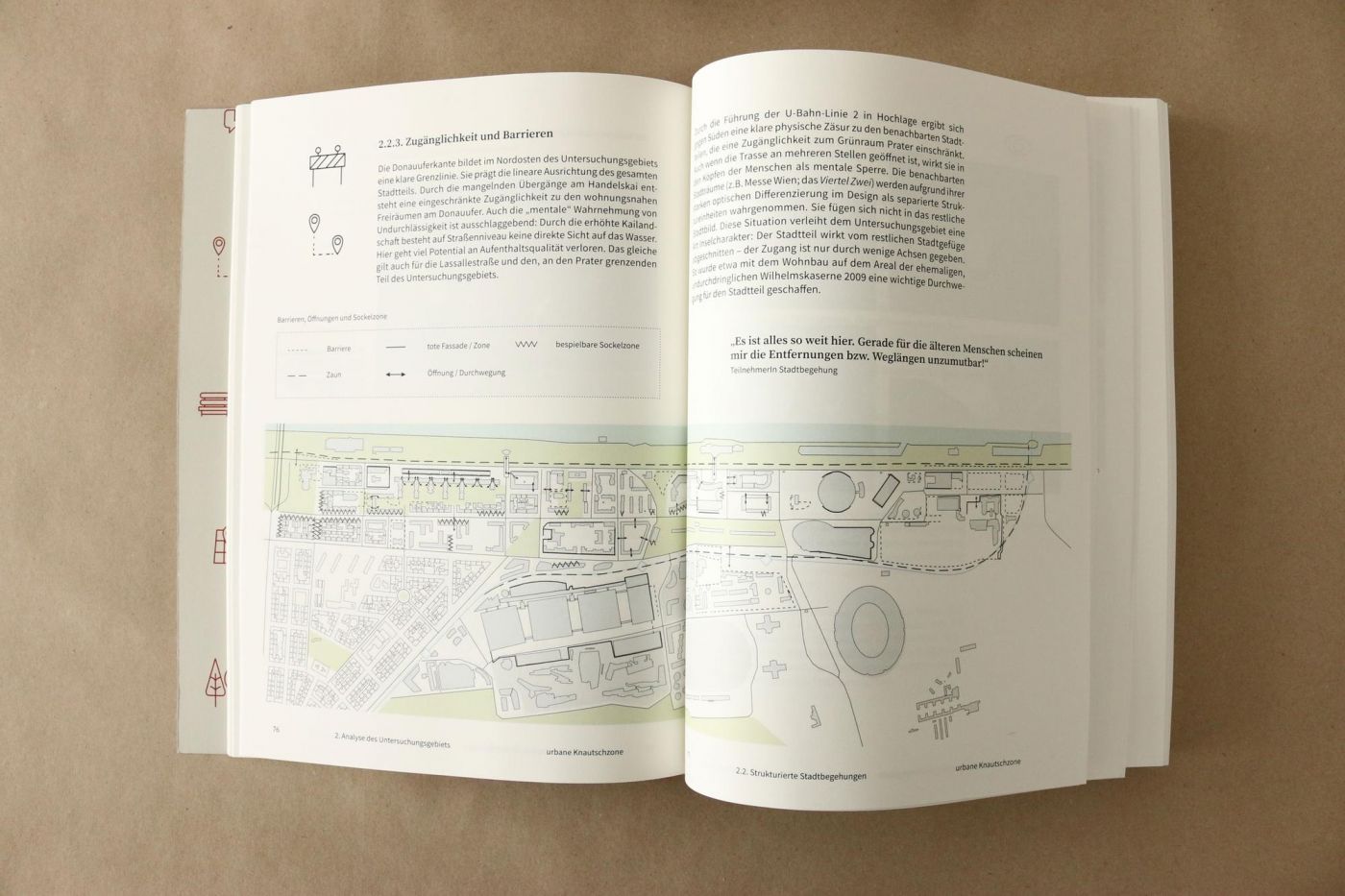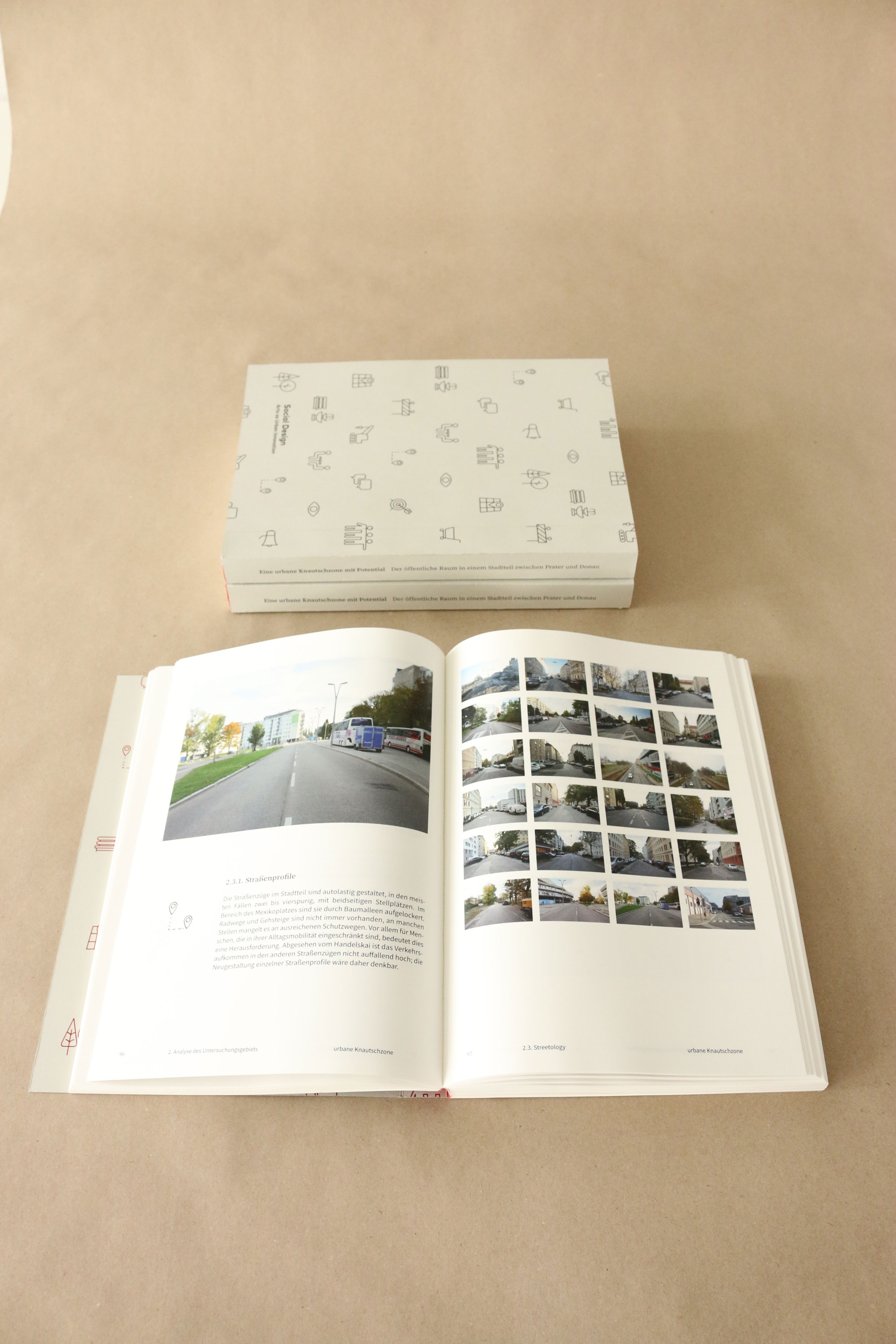Urbane Knautschzone mit Potential
Martin Färber, Lena Kohlmayr, Karolina Plášková, Christina Schraml, Asia Valencic
On behalf of the municipal department MA 19 – architecture and urban design and as part of our own long-term project Urban Knautschzone we conducted an interdisciplinary research study on the public space in the residential area located between Vienna’s large public park Prater and the river Danube in the city’s 2nd district.
As part of the project Urban Knautschzone* we conducted a research study of the public space during the period from spring to December 2017 to identify urban and social challenges and to highlight and strengthen the area’s potentials and original qualities. In addition to established practices of urban research, artistic-scientific methods were applied, i.e. structured site visits, streetology, qualitative interviews with users (with a special focus on the elderly, teenagers and people with care responsibilities), emotional and mental mapping, and expert interviews.
The aspects taken into account by the study include, amongst others: historical development; urban planning and open space structure; green spaces, public and semi-public spaces; social structure, needs and socio-spatial interaction of various user groups (e.g. questions of social cohesion, diversity, racism and conflicts between young and old); recent and upcoming urban development projects; public transport and mobility; local infrastructure, urban furniture and architecture; accessibility and barriers; street profiles, dimensions and orientation; security and surveillance; vacancies, voids and ruptures in the urban fabric; emotional and mental perception of the space and daily routes (e.g. spaces perceived as attractive vs. negative); identity and forms of appropriation.
As a direct response to our findings and the needs identified among users of the space, we generated hot topics and a set of concrete recommendations for actions to improve the quality of stay in the immediate living area, strengthen the neighbourhood’s identity and to create spaces for social interaction to foster social cohesion. Based on the outcomes, we are currently developing site-specific Social Design acupunctures to be implemented together with the locals. Our aim is to trigger positive processes, which are in line with an urban development which relies on social innovation from the grass roots level.
*The project Urban Knautschzone engages with the residential area between Prater and Danube. The area’s housing structure is characterised by dense population and mono-functional use, concentrated in large social housing estates. The public space is dominated by cars and offers a rather poor quality of stay. The ground floor level shows a high vacancy rate and thus the entire neighbourhood seems to lack an overall identity. In general, the area is somewhat squeezed in: Though two of Vienna’s main recreation areas are in close proximity, i.e. Prater and Danube, yet they are hardly accessible for the local population. Both the elevated underground system to the south and the railway tracks running north form a physical (and mental) barrier. Moreover, since the expansion of the underground U2 in 2008, the area is encircled by a range of high-speed urban (re)development projects. Thus, the neighbourhood finds itself at a critical point in time, which is where the project comes in.
Cooperation Partner: Andrea Kreppenhofer, Stadt Wien - MA 19 Architektur und Stadtgestaltung





- Time
- 2017
- Location
- Vienna
- Team
- Martin Färber
- Lena Kohlmayr
- Karolina Plášková
- Christina Schraml
- Asia Valencic